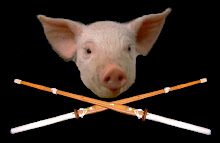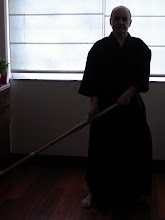The Muramasa blades were known in ancient Japan to not only be deadly to opponents, but also to the owners themselves.
Muramasa Sengo lived and pursued his sword-making craft during the Muromachi Period – between the 14th and 15th century AD - in feudal Japan’s Ise Province, in a the Kuwana town. He founded the Muramasa school and passed down his sword-making art and style to students. This legacy continued for 200 years. Both Muramasa and his sword-making school were known for their extraordinary quality and sharpness of their blades, making their weapons greatly prized and highly sought after by warriors and generals in the early 1500's.
Muramasa was an incredible swordsmith to the point that people regarded him as one of the finest swordsmiths who ever lived. Although he had incredible talent, he was also known to have a troubled mind. Aside from the quality and sharpness of his swords, he also gained notoriety for his rather volatile nature, and some believed a dark curse or evil spirit emanates from his weapons.
The rumors regarding the supposed “curse” of the Muramasa blades mainly originated from the abrasive and venomous personality of Muramasa himself. Besides being a brilliant swordsmith, he supposedly sometimes went insane, bursting into violent rages and lashing out at whoever was nearby. This unbalanced mind bordering on complete madness, a relentless drive for perfection, and a violent passion for crafting deadly swords gave birth to weapons possessing his genius, intense determination, and insane bloodlust.
Muramasa’s swords were said to have a life of their own. There are tales claiming that the swordsmith had made a deal with the devil to make the deadliest and most powerful weapons. Aside from that, Muramasa allegedly had the habit of whispering a prayer to the gods that his swords would become the “greatest destroyers.”
The swords created by Muramasa were believed capable of possessing their wielders and pushing them beyond the brink of murderous rage. Stories say these swords boost swordsmanship, super strength, and resistance to damage and pain! The cursed Muramasa swords are believed to thirst for blood and if not satisfied with enough blood from enemies, they would turn on their owner forcing them to commit suicide for appeasement!
If a Muramasa blade was drawn, that sword would ruthlessly demand blood before it could be placed back into its scabbard, which meant almost certain doom for its wielder if no one else was around for the weapon to unleash its bloodlust upon. There are also claims that a sheathed Muramasa sword would call to be unleashed and compel their owners to kill!
Although the Muramasa swords were irrefutably effective weapons proving reliable in battle, the dark curse surrounding them allegedly made these weapons just as dangerous for its wielders and those around them. The swords were believed to hardly discriminate between friend and foe, using their owners only as mere instruments to help them kill people — even the wielders’ allies, friends, and family. It was also quite common to hear about owners of Muramasa swords going insane, with their minds bent to or destroyed by the demonic will of their weapons. Sometimes, these warriors ended up killing themselves to escape the curse and the madness that come with the swords.
Even with the “evil” reputation of the Muramasa blades, the swords remained popular in Japan, with Muramasa Sengo’s school of sword-making enduring for the next 200 hundred years. It was only during the reign of Tokugawa Ieyasu, the first shogun of the last feudal government in Japan, that Muramasa’s blades fell out of favor.
The shogun believed that the Muramasa swords were cursed, and blamed them for the demise of many of his allies, friends, and relatives. The Shogun's father, Matsudaira Hirota, as well as his grandfather, Matsudaira Kiyoyasu, were apparently both cut down by their retainers who were in a murderous trance while wielding such swords. Tokugawa even claimed that he was also cut by a Muramasa katana that was carried by one of his samurai guards while he inspected his ranks. His own wife and adopted son were also allegedly executed using a Muramasa sword.
These gave rise to the legend that Muramasa’s blades possessed the curse and power to kill members of the Tokugawa family. As a result of this, the Shogun decided to ban the ownership of Muramasa blades. Many of them were melted down, but some were also hidden away. The Shogun took the ban so seriously that those who were caught in possession or keeping Muramasa blades were punished severely.
One notable case was that of Takanak Ume, the Magistrate of Nagasaki. In 1634, the magistrate was found to have hoarded as many as 24 Muramasa blades, and because of this, he was ordered to commit “seppuku” – a ritual suicide by disembowelment.
Despite the harsh punishments imposed upon those who were caught to be in possession of Muramasa swords, there were those who insisted on keeping their blades, even going so far as to change the markings on these blades to avoid detection from authorities. And because these swords were thought to have a special affinity for killing members of the Tokugawa family, there was also a heightened demand for the Muramasa blades among the Shogun's enemies. Thus for profit, lesser swordsmiths made fakes and today it's difficult to verify the authenticity of surviving Muramasa blades.
Were the Muramasa Blades really cursed with a bloodthirsty evil spirit or were the stories just a byproduct of their crazed popularity back then? Were the violence and killings really the fault of the swords or was it the warriors' own thirst for power?
Nevertheless, Muramasa Blades today still embody the superior Japanese sword-making skills and are present in today’s pop culture. Magical and powerful weapons based on these legendary swords are found in many Asian medias from video games to anime and even in western Marvel comics.
Taken from and more info in:







































